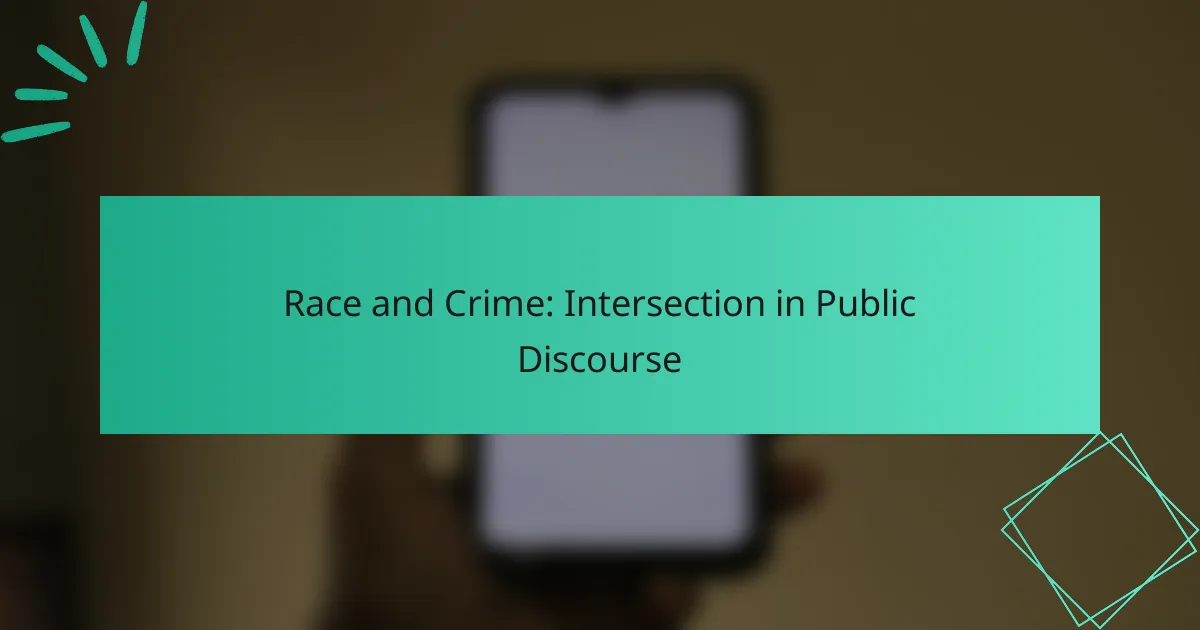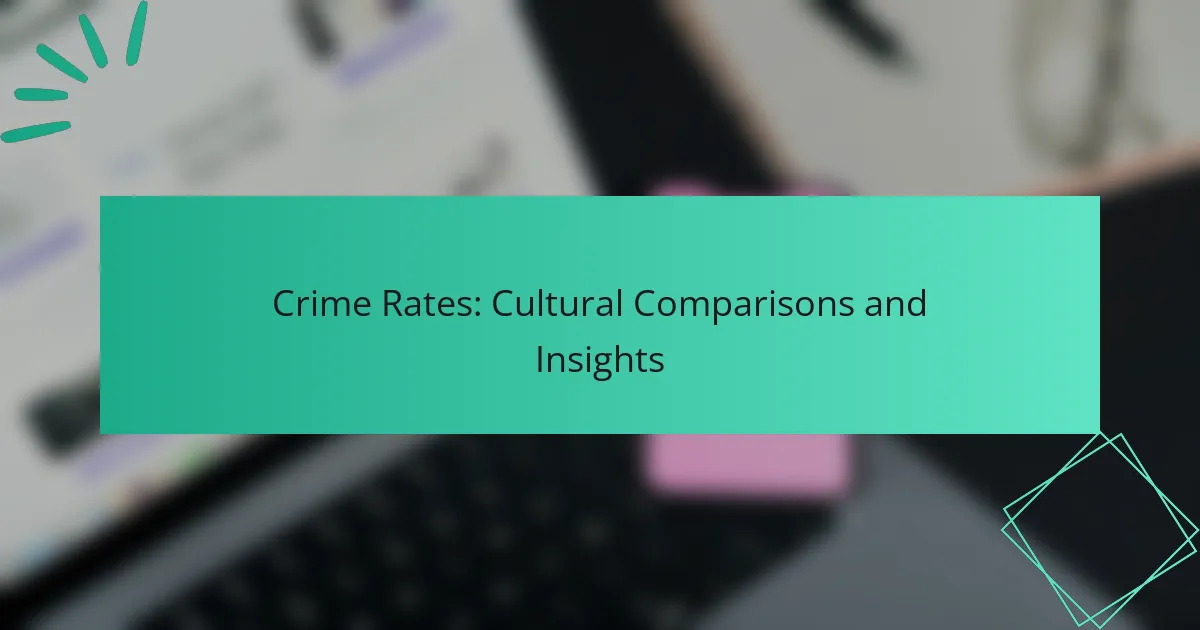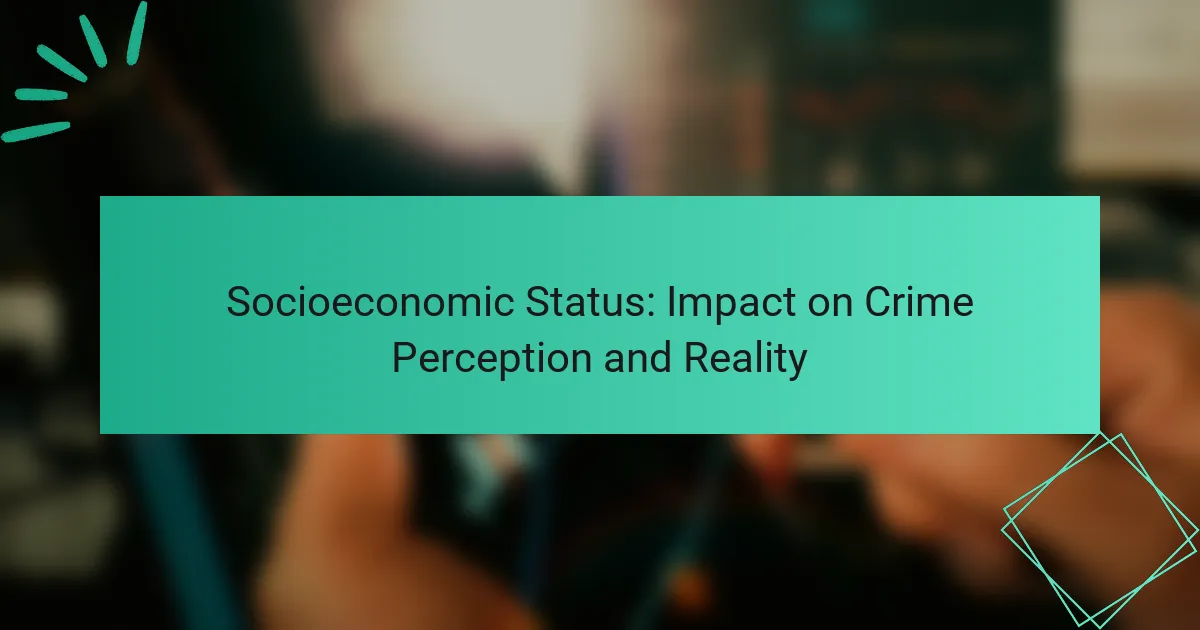The intersection of race and crime in public discourse reveals significant biases that shape perceptions and responses to criminal activity. In the UK, these biases can lead to distorted interpretations of crime statistics and influence policing practices, resulting in unequal treatment of individuals based on their racial background. Addressing these disparities through informed public policies is crucial for fostering equitable law enforcement and enhancing community safety.

How does race impact crime perception in the UK?
Race significantly influences crime perception in the UK, often leading to skewed interpretations of crime statistics and community safety. Public discourse frequently reflects racial biases, which can distort the understanding of crime and its causes.
Racial bias in media reporting
Media reporting plays a crucial role in shaping public perception of crime and race. Coverage often emphasizes crimes committed by individuals from minority backgrounds, which can perpetuate stereotypes and foster fear. This selective reporting can lead to a misrepresentation of crime trends and the communities involved.
For instance, when violent crimes are reported, the race of the perpetrator may be highlighted more prominently if they belong to a minority group, while similar crimes committed by individuals from majority backgrounds may receive less attention. This imbalance can skew public perception and reinforce racial biases.
Statistical disparities in crime rates
Statistical data on crime rates often reveal disparities that can be misleading. While certain racial groups may be overrepresented in crime statistics, these figures can reflect broader socio-economic issues rather than inherent criminality. Factors such as poverty, lack of access to education, and systemic inequalities contribute significantly to these disparities.
Understanding these statistics requires context; for example, areas with higher levels of deprivation may experience higher crime rates overall, impacting various racial groups. Thus, it is essential to approach crime statistics critically and consider the underlying social factors at play.
Community narratives and stereotypes
Community narratives surrounding crime often reinforce existing stereotypes related to race. These narratives can shape the way individuals perceive safety and trust within their neighborhoods. For example, a community may develop a narrative that associates crime with specific racial groups, leading to increased tension and division.
Addressing these stereotypes involves fostering dialogue within communities and promoting understanding. Initiatives that encourage positive interactions among diverse groups can help dismantle harmful narratives and build a more cohesive society. Engaging in community outreach and education can also play a vital role in changing perceptions and reducing racial biases in crime discourse.
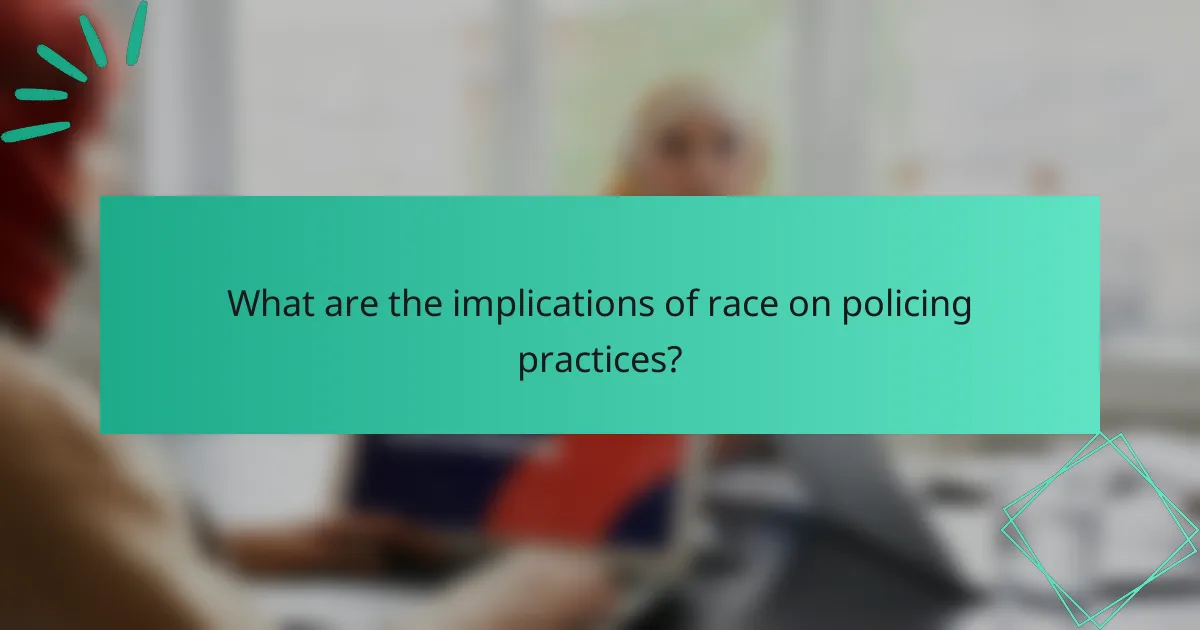
What are the implications of race on policing practices?
Race significantly influences policing practices, often leading to disparities in how individuals are treated by law enforcement. These implications can manifest in various ways, including the frequency of stops, searches, and the overall relationship between police and communities of color.
Disproportionate stop-and-search statistics
Data frequently shows that individuals from racial and ethnic minority groups are stopped and searched at higher rates compared to their white counterparts. For example, in some urban areas, Black individuals may be stopped up to five times more often than white individuals, despite similar rates of criminal activity.
This disparity raises concerns about racial profiling and the fairness of policing practices. It is essential for law enforcement agencies to analyze their stop-and-search data regularly to identify and address any patterns of discrimination.
Community trust and police relations
The relationship between police and communities of color can be strained due to perceptions of bias and unfair treatment. When policing practices disproportionately target certain racial groups, it can erode trust and cooperation between these communities and law enforcement.
To rebuild trust, police departments should engage in community outreach and implement transparency measures, such as public reporting of stop-and-search statistics. Building partnerships with community leaders can also foster dialogue and improve relations, ultimately leading to more effective policing.
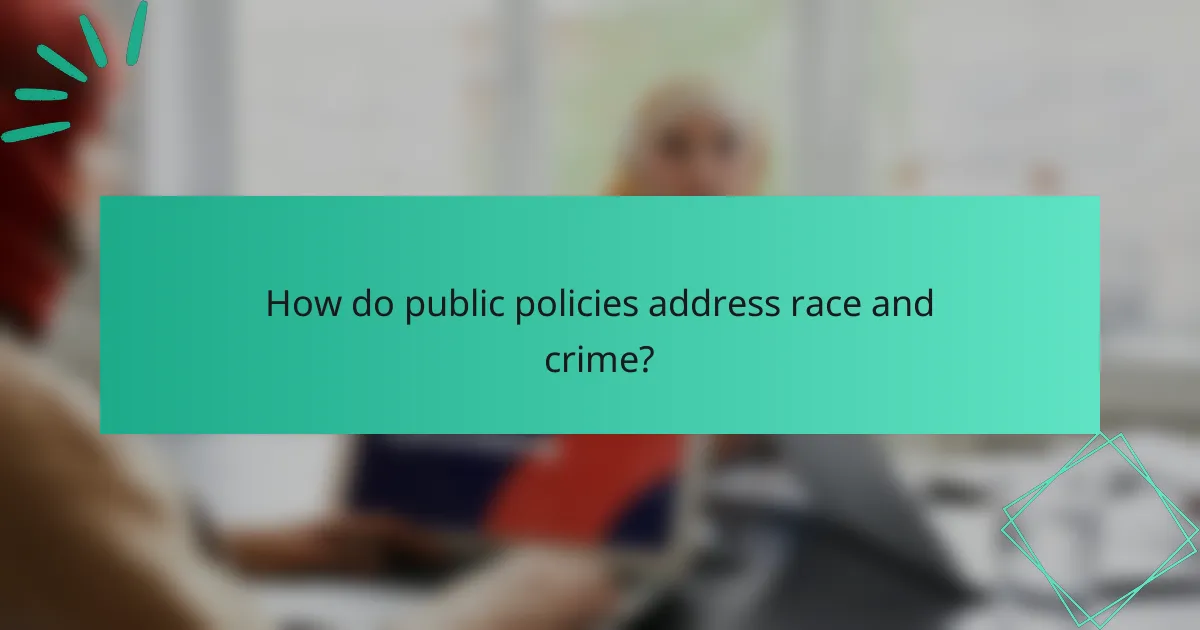
How do public policies address race and crime?
Public policies addressing race and crime aim to reduce disparities in the criminal justice system and enhance community safety. These policies often focus on equitable law enforcement practices, prevention programs, and community engagement to address the root causes of crime within racially diverse populations.
Policy frameworks in the UK
In the UK, policy frameworks addressing race and crime include the Race Relations Act and the Crime and Disorder Act. These laws promote equal treatment and aim to reduce racial discrimination in policing and sentencing. Additionally, initiatives like the Lammy Review highlight the need for reforms to ensure fair treatment of minority groups within the justice system.
Local authorities often develop community safety partnerships that involve various stakeholders, including police, local councils, and community organizations. These partnerships focus on tailored strategies that address specific local issues related to race and crime, fostering collaboration and accountability.
Effectiveness of community policing initiatives
Community policing initiatives have shown effectiveness in building trust between law enforcement and racially diverse communities. By involving community members in decision-making and problem-solving, these initiatives can lead to improved public safety and reduced crime rates. For instance, programs that encourage police officers to engage with local residents can enhance cooperation and information sharing.
However, the success of community policing depends on sustained commitment and resources. Agencies must ensure that officers receive proper training in cultural competency and bias reduction to foster genuine relationships. Regular evaluation of these initiatives is essential to adapt strategies based on community feedback and changing dynamics.

What role do social movements play in shaping discourse?
Social movements significantly influence public discourse by raising awareness, challenging narratives, and advocating for policy changes. They mobilize communities, amplify marginalized voices, and create platforms for dialogue around critical issues like race and crime.
Black Lives Matter UK impact
The Black Lives Matter UK movement has played a crucial role in reshaping conversations about racial injustice and policing in the UK. By organizing protests and campaigns, it has highlighted systemic racism and called for accountability in law enforcement practices.
Through social media and public demonstrations, the movement has engaged a diverse audience, fostering discussions that extend beyond the immediate context of police violence to broader societal issues. This has led to increased public scrutiny of government policies and a push for reforms in criminal justice.
Grassroots advocacy for reform
Grassroots advocacy is essential for driving meaningful reform in policies related to race and crime. Local organizations often mobilize community members to advocate for changes in law enforcement practices, such as the implementation of body cameras and community oversight boards.
These advocacy efforts typically involve direct engagement with policymakers, public education campaigns, and coalition-building with other social justice groups. By focusing on specific, actionable reforms, grassroots movements can create a sustained impact on public policy and community safety.

How can data analysis improve understanding of race and crime?
Data analysis enhances the understanding of race and crime by providing empirical evidence that can reveal patterns, trends, and correlations. This approach allows for a more informed discussion about the complex relationship between race and crime, moving beyond anecdotal evidence to data-driven insights.
Use of crime mapping tools
Crime mapping tools visualize crime data geographically, helping to identify hotspots and trends over time. By displaying where crimes occur in relation to demographic factors, these tools can highlight disparities in crime rates among different racial or ethnic groups.
For effective use, analysts should ensure that the data is current and accurately reflects the community’s demographics. Tools like GIS (Geographic Information Systems) can be particularly useful, allowing for layered analysis of crime data alongside socioeconomic indicators.
Analysis of demographic data trends
Analyzing demographic data trends involves examining how various factors such as race, income, and education correlate with crime rates. This analysis can uncover systemic issues that contribute to crime, such as poverty or lack of access to education, which disproportionately affect certain racial groups.
When conducting this analysis, it is crucial to consider the context of the data, including historical and social factors. Analysts should look for long-term trends rather than short-term fluctuations to gain a clearer understanding of the underlying issues.
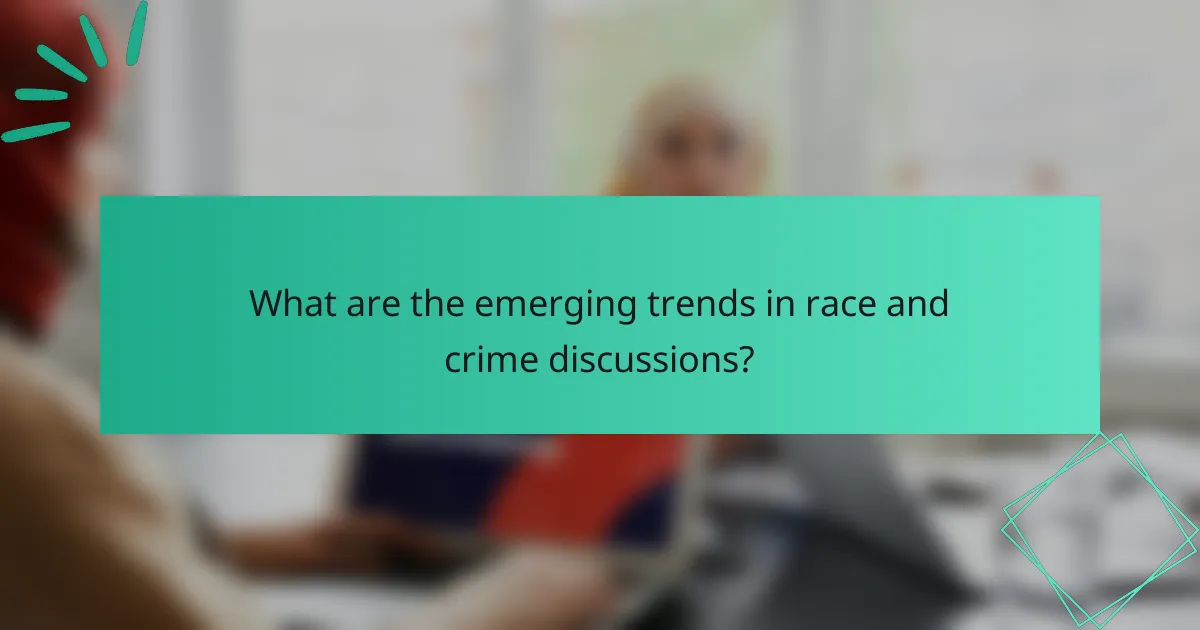
What are the emerging trends in race and crime discussions?
Emerging trends in race and crime discussions highlight a growing awareness of systemic inequalities and their impact on crime rates and law enforcement practices. These conversations increasingly focus on the intersectionality of race, socioeconomic status, and criminal justice policies, emphasizing the need for comprehensive reforms.
Impact of social media on public perception
Social media has significantly influenced public perception of race and crime by amplifying voices and narratives that may have been overlooked in traditional media. Platforms like Twitter and Facebook allow for real-time sharing of incidents, leading to heightened awareness and mobilization around issues of racial injustice.
However, the rapid spread of information can also lead to misinformation and polarized views. Users must critically evaluate sources and consider the broader context before forming opinions based on social media content.
Future directions for research and policy
Future research on race and crime should focus on the effectiveness of policy interventions aimed at reducing racial disparities in the criminal justice system. This includes evaluating community-based programs and restorative justice initiatives that prioritize rehabilitation over punishment.
Policymakers should consider incorporating data-driven approaches to address systemic issues, such as bias in policing and sentencing. Engaging with communities affected by crime can provide valuable insights and foster trust between law enforcement and the public.
